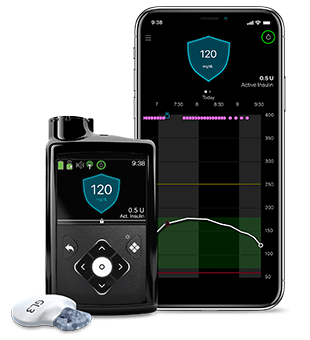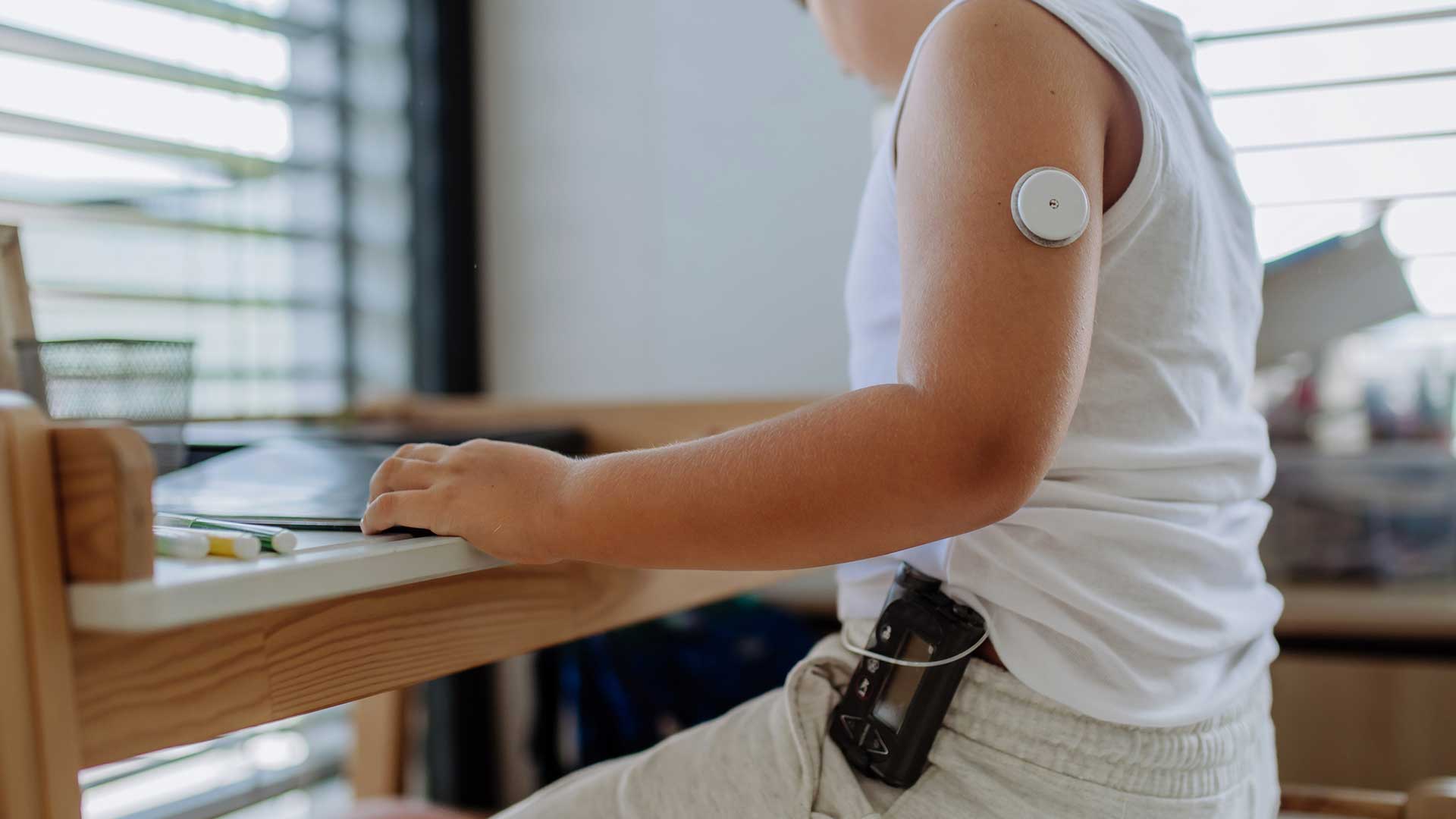Insulin pumps are small devices that can deliver exact amounts of insulin throughout the day and night – in many cases automatically. This differs from doing injections manually via pens and needles, called multiple daily injections (MDI). Insulin pumps and MDI both have their pros and cons, and each person will have their own preference as to which they use to manage their type 1 diabetes. This article will focus specifically on pumps.
Let’s look at “closed”-loop insulin pumps, how they work, and find out why they can be such a great option for type 1 diabetics.
What is a Closed-Loop System?
A closed-loop insulin system is also known as an automated insulin delivery system or an artificial pancreas.
In short, a closed-loop insulin pump works just like the pancreas by delivering insulin in small amounts all the time and bigger amounts when needed. This is because closed-loop pumps can adjust insulin doses automatically by communicating with the continuous glucose monitor (CGM) attached to your skin.
The CGM measures your blood sugar levels in regular five- or one-minute intervals, depending on the CGM manufacturer, and sends data to the pump.
As the closed-loop system can adjust insulin delivery automatically, it’s very efficient at managing hyperglycemia (high blood glucose) or preventing hypoglycemia (low blood glucose). This can be a game changer for managing type 1 diabetes.
It’s important to note up front that true “closed-loop” systems do not exist yet. Usually, if someone says they use a “closed-loop” insulin pump, they are actually using a “hybrid closed-loop” system. More on this below.
Closed-Loop System Vs Hybrid Closed-Loop System
Automated insulin delivery systems can be broadly categorized into three main systems:
Low-Glucose Suspend Systems (LGS)
Low glucose suspend systems were the first closed-loop delivery systems that could stop insulin delivery in response to low blood glucose values. It could prevent hypoglycemia by suspending insulin delivery when glucose values were below normal threshold values.
Hybrid Closed-Loop Insulin Pumps
A hybrid closed-loop insulin pump uses a combination of a CGM sensor, a program, and an insulin pump. However, the system is not fully closed-loop, as it still requires some manual input from the user for bolus doses during meals. This manual input is usually in the form of carbohydrate intake and exercise levels.
Fully Automated Closed-Loop Insulin Delivery
As the name suggests, fully automated closed-loop insulin delivery systems, if achieved, will carry all the functionality of delivering basal and bolus doses. The idea is that they won’t require user input as the hybrid system does, so the user won’t need to count carbs.
These systems are not yet a reality, however. The hybrid systems are as far as we’ve gotten with closed-loop research so far.
Closed-Loop Insulin Pumps
Low-Glucose Suspend Systems
Low-Glucose Suspend systems are first-generation automated devices that automatically shut off insulin delivery when the blood glucose level drops below a preset threshold. However, LGS systems do not respond to an elevated level of glucose.
1. Medtronic MiniMed 530G with Enlite System

The MiniMed 530G was considered the world’s first breakthrough in artificial pancreas technology when it came out.
It automatically suspends insulin delivery when glucose levels drop below a certain threshold and emits sound and visual alerts to the user to warn that insulin has been suspended and that glucose levels are dangerously low.
Medtronic, the manufacturer of the Minimed 530G, recommends this pump for people over 16 years old.
Hybrid Closed-Loop Systems
1. Medtronic MiniMed 770G/780G

The Medtronic MiniMed 770G system is an advanced hybrid closed-loop system. The insulin pump (Medtronic 780G) integrates with the Guardian Sensor 3 to send data to a smartphone app. This system doesn’t offer automated correction boluses.
2. CamAPS FX

CamAPS FX comes with one of the smallest and lightest insulin pumps, the Dana Diabecare RS insulin pump. The insulin pump delivers insulin via the tube through the cannula inserted under the skin, making this a tethered pump.
This system is also approved to be used by kids as young as 1 year old.
3. Omnipod 5

Omnipod 5 is a hybrid closed-loop system that integrates with the Dexcom G6 CGM. This pump was the first hybrid closed-loop tubeless pump (patch pump) on the market. However, bolus insulin doses before meals or snacks must be adjusted manually.
(As a side note, Gluroo integrates extremely well with the Omnipod 5. Gluroo is the only option available for remote monitoring of the OP5 insulin activity on both iOS and Android.)
4. Tandem T:Slim X2

Tandem T Slim X2 is one of the best hybrid closed-loop insulin delivery systems with Control IQ technology that responds more accurately to the CGM readings. It integrates with the Dexcom G6 CGM as well.
DIY Closed-Loop Systems
DIY Closed-Loop Systems are artificial systems or projects built by the public to manage type 1 diabetes. This system, called DIY Looping, was created by people with type 1 diabetes who used their programming skills and available tools to build a personalized solution for looping that isn’t commercially available.
In simple words, DIY looping involves using an insulin pump and a CGM in combination with a custom-built algorithm to create a closed-loop system. The CGM continuously measures the user’s blood glucose levels, and the algorithm analyzes this data to predict future glucose levels and adjust the insulin delivery accordingly.
The algorithm runs on a smartphone and communicates with the insulin pump to adjust the amount of insulin delivered. The system can also include features like automatic insulin suspension to prevent hypoglycemia (low blood sugar) and customizable settings for different times of day and different activities.
DIY looping requires significant technical expertise and involves coding, hardware, and software to create a personalized system.
If you want to find out more about DIY Looping and how you can use Gluroo for that, take a look at our posts on how to use Gluroo with a DIY artificial pancreas system and how to use the Gluroo & Nightscout integration feature for DIY Looping.
Gluroo is a Great Tool For DIY Looping
If you already have an older insulin pump that doesn’t integrate with CGMs by itself and you want to dive into the world of DIY looping so you can enjoy the benefits of a closed-loop system, you can always use Gluroo. Just make sure you read our articles on the subject and go about it carefully. Consider asking someone more code-savvy for help if that’s not your case.
And if you have any questions on how to use Gluroo in general or for DIY Looping, don’t hesitate to reach out to us!
You can download Gluroo for free today.




